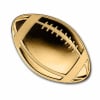Welcome to the Hardcore Husky Forums. Folks who are well-known in Cyberland and not that dumb.
Street Survivors Update

YellowSnow
Moderator, Swaye's Wigwam Posts: 37,925 
Comments
-
Dark shit

-
The team can’t actually all fit on an E175RaceBannon said:Dark shit

Axe @Logistics
If this was a 737, then yes, dark shit. -
-
Who’s the Huskies Artemis Pyle?
-
Mike Penix's kneesJoeEDangerously said:Who’s the Huskies Artemis Pyle?
-
Jabbar Muhammad. Interesting name. Late addition. Solid.JoeEDangerously said:Who’s the Huskies Artemis Pyle?
-
Don’t get any funny ideas bazel
-
Huh?!PurpleJ said:Don’t get any funny ideas bazel
-
Jordan ReffertJoeEDangerously said:Who’s the Huskies Artemis Pyle?
-
Good pull







